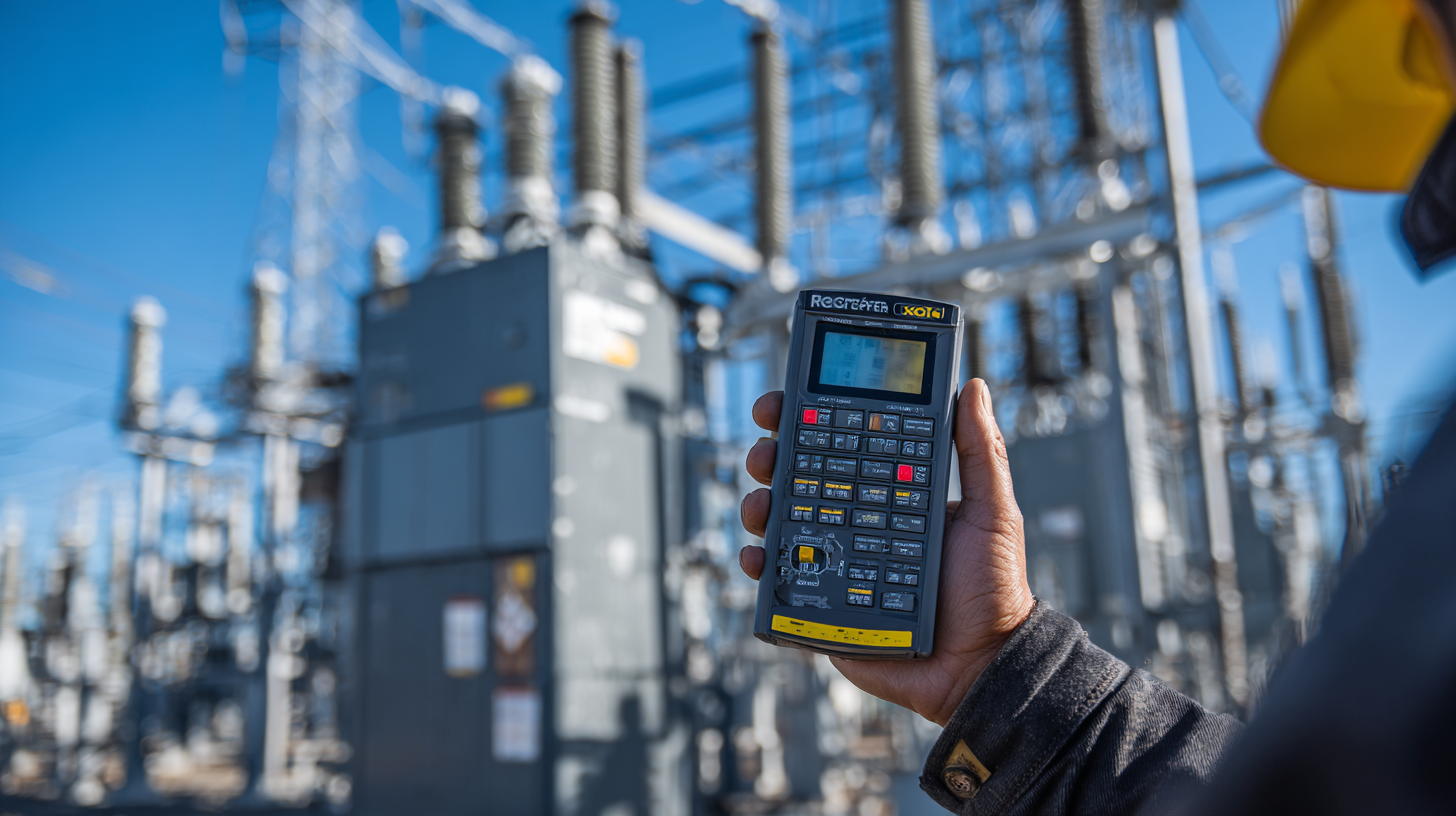In today's rapidly advancing electrical landscape, selecting the appropriate Rccm Breaker is crucial for ensuring both safety and efficiency in electrical systems. According to the International Electrotechnical Commission (IEC), nearly 60% of electrical failures can be attributed to inadequate protection devices, highlighting the significance of making informed choices. Furthermore, the global market for circuit breakers, including Rccm Breakers, is projected to reach $45.3 billion by 2027, driven by increasing demand for reliable electrical infrastructure and rigorous safety standards. As professionals seek to optimize their electrical setups, understanding the various types and specifications of Rccm Breakers becomes imperative. This guide aims to demystify the selection process, empowering users to choose the right breaker that not only meets their specific electrical needs but also enhances system performance and safety compliance.

When it comes to electrical safety, understanding the differences between RCCB (Residual Current Circuit Breaker) and RCCM (Residual Current Circuit Breaker with Overcurrent Protection) is essential. Both devices play a crucial role in protecting circuits from earth faults and short circuits, but they serve distinct functions. The RCCB is designed primarily to disconnect power when there is a leakage current, providing vital protection against electric shock. On the other hand, the RCCM combines the functions of an RCCB with overcurrent protection, guarding against both leakage current and overloads, making it ideal for more demanding applications.
Tips: When selecting an RCCM breaker, consider the specific electrical load and the environment where it will be used. For instance, areas with high humidity or moisture may necessitate an RCCB for enhanced safety. Additionally, take into account the current rating of your devices to ensure that the RCCM provides adequate overcurrent protection without tripping unnecessarily.
In applications where both types of breakers can be utilized, it is vital to evaluate the electrical requirements carefully. For general household use, an RCCB may suffice, while industrial settings often warrant the robustness of an RCCM. Always consult with a certified electrician to determine the best option for your particular setup, ensuring optimal safety and functionality.
Choosing the right RCCB (Residual Current Circuit Breaker) is crucial for ensuring electrical safety in any environment, whether residential or commercial. With electrical hazards accounting for nearly 20% of home fires in the United States each year, according to the National Fire Protection Association (NFPA), it becomes imperative to utilize devices that mitigate these risks. An RCCB serves to protect against earth faults, aiding in the prevention of electrical shocks and reducing the likelihood of fire caused by faulty wiring.
Recent industry reports indicate that approximately 70% of electrical accidents can be circumvented by properly selecting and installing the right breaker. Factors such as the rated current, the number of poles, and the sensitivity of the RCCB play a critical role in its effectiveness. For instance, a 30 mA RCCB is typically recommended for personal protection in residential installations, while a 100 mA rating may be more appropriate for fire protection in commercial applications. Understanding these specifications and aligning them with your specific electrical needs is essential to maximizing safety and compliance with local electrical codes.
| Breaker Type | Current Rating (A) | Voltage Rating (V) | Breaking Capacity (kA) | Application |
|---|---|---|---|---|
| Type A | 30 | 240 | 10 | Residential |
| Type B | 40 | 380 | 16 | Commercial |
| Type C | 60 | 480 | 25 | Industrial |
| Type D | 80 | 600 | 35 | Heavy Machinery |
 When selecting an RCCM (Residual Current Circuit Breaker with Monitoring) breaker for your electrical needs, several key factors come into play. First and foremost, understanding the specific electrical load and environment is crucial. Evaluate the type of appliances and devices to be protected, as heavy machinery may require breakers with higher current ratings. Additionally, consider the installation location; for instance, damp or humid environments necessitate models with better weather resistance.
When selecting an RCCM (Residual Current Circuit Breaker with Monitoring) breaker for your electrical needs, several key factors come into play. First and foremost, understanding the specific electrical load and environment is crucial. Evaluate the type of appliances and devices to be protected, as heavy machinery may require breakers with higher current ratings. Additionally, consider the installation location; for instance, damp or humid environments necessitate models with better weather resistance.
Another vital aspect is the sensitivity rating of the RCCM breaker. It’s essential to choose a unit that can detect faults effectively according to the application needs. For residential setups, a 30 mA sensitivity is typically suitable, while industrial applications may demand a lower threshold to protect sensitive equipment. Furthermore, check for compatibility with existing electrical systems and ensure the breaker meets local safety regulations. By carefully considering these factors, you can select the right RCCM breaker to ensure optimal protection and functionality for your electrical infrastructure.
When considering RCCM breakers, misconceptions often cloud the decision-making process. One common belief is that all breakers provide the same level of protection. In reality, RCCM (Residual Current Circuit Monitoring) breakers serve a specialized function in detecting abnormal current flow, which is critical for preventing electric shocks and fires. According to a report by the Electric Power Research Institute (EPRI), failure to use appropriate RCCM protection can lead to a 30% increase in electrical incident rates in industrial settings.

Another misconception is the ease of installation and complexity of operation. Many assume that RCCM breakers require extensive technical knowledge, when in fact, most modern units are designed with user-friendly features in mind. A study by the National Electrical Manufacturers Association (NEMA) highlighted that over 70% of users found installation straightforward, thanks to improved design and comprehensive user manuals. Additionally, education and training on RCCM usage can be acquired through brief online courses or manufacturer workshops, making it accessible for even those with minimal electrical expertise.
Proper installation and maintenance of RCCM breakers is crucial to maximizing their efficiency and ensuring the longevity of your electrical systems. According to industry reports, effective preventive maintenance can enhance equipment lifespan by up to 30%, significantly reducing unexpected downtimes. Regular inspections and servicing of RCCM breakers facilitate early detection of potential issues, which not only prevents catastrophic failures but also boosts the overall reliability of your electrical infrastructure.
Additionally, energy efficiency remains a paramount concern in today’s operational environments. Studies suggest that optimizing the performance and installation of electrical components like RCCM breakers can reduce energy consumption by as much as 10-15%. This is particularly vital for organizations seeking to balance operational costs and sustainability initiatives. By investing in proper maintenance schedules and adhering to manufacturer guidelines, businesses can achieve both efficiency and compliance, ultimately enhancing their return on investment in electrical systems.
This bar chart illustrates the energy efficiency ratings of different RCCM breakers based on their load capacity. Understanding these ratings can help in making informed decisions about installation and maintenance.






